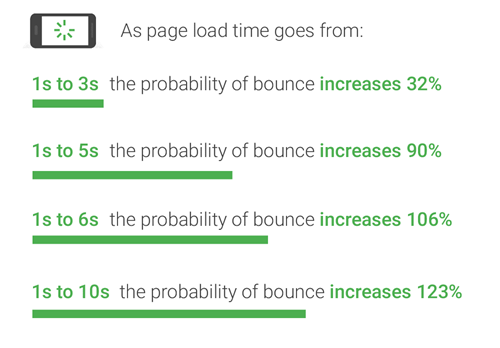B2B Mobile Commerce is on The Rise For 2018
By Gabriella Pirrone
April 9, 2018
B2B, commerce, DataIKU, ecommerce, Episerver, Forrester, Google, Mobile Commerce, omnichannel, Omnichannel Marketing
You may (or may not) be asking yourself, what exactly is B2B Mobile Commerce? Well, it’s exactly what you may think, people are now spending more time on their phones or tablets than on their desktops or laptops when it comes to buying or selling online.
 In an official Google statement, more than 50% of search queries globally now come from mobile devices. And we all know what that means, where there is a queried search, there is also, likely an intent for purchase.
In an official Google statement, more than 50% of search queries globally now come from mobile devices. And we all know what that means, where there is a queried search, there is also, likely an intent for purchase.
It’s also said in a report by Forrester that B2B Commerce will reach $1.2 trillion and account for 13.1% of all B2B sales in the US by 2021. At the end of 2017, Forrester also estimated that Commerce would reach $889 billion and represent 11% of B2B sales in the US.
An Omni-channel Presence is Key For All Consumer Markets in 2018
The ability to be present to a consumer at all times, through any device, platform or channel, is one thing that B2B retailers are going to dive deep into in 2018. B2B sellers are upping their presence, on all devices – phone, web, mobile and catalog, just like B2C sellers. It is just as paramount for B2B sellers to fulfill customer expectations and provide them with effective functionality, customer reviews, feedback and tools.
Also, increased revenues, enhanced customer loyalty, and lower transaction costs are now possible using platforms that are easily accessed by portable and mobile devices in the hands of standalone buyers and experienced sales reps.
This past month, Laura Myers and Venus Tamturk attended Episerver Ascend 2018 where they were very fortunate to sit down and chat with a few of Episervers’ employees and customers. But one interview from the past year really stood out in my mind on this topic. It is a great chat Laura had with Joey Moore, Director of Product Marketing at Episerver. Laura and Joey’s topic of conversation heavily revolved around the multichannel commerce strate gy and his thoughts on the topic.
gy and his thoughts on the topic.
One of the things Joey thought was the biggest mistake with a multi-channel strategy and that most organizations are having difficulty with is not setting up the customer journey in a way that organizations themselves can understand where customers are coming from.
Joey mentioned a great point: “Customers won’t wait for you to catch up as they will just move to the next organization.” He also said: “Today’s customers are the least loyal and the most demanding generation, and this situation puts a lot of weight on not only vendors like us to keep up and stay ahead of the demand but also on our customers and how they speak to their potential customers at the market.”
Is 2018 The Age of The Millennials When It Comes to Commerce?
According to Google, this is in fact true. Nearly half of B2B buyers are millennials and when it comes to online shopping, millennials are known for their tech savviness and finesse. Today’s millennial B2B buyers have redefined what a great customer experience or customer journey entails. An overwhelming majority of millennials would much rather make transactions online, with it being said three out of four B2B firms and organizations are rising to the occasion and are already upgrading their commerce platform or planning to within three years.
Not only do I completely agree with this, but it’s also very important to understand that buyers are no longer willing to tolerate a cumbersome purchasing process, which means B2B companies must keep up with the fast pace of buyers' demands, especially if they are relating to commerce experiences.
For example, according to Google’s latest mobile benchmark report, “The probability of someone bouncing from your site increases by 113 percent if it takes seven seconds to load.” But, the bad news is, almost every website they reviewed took longer than seven seconds to load.

Big Data Affecting The Commerce Community in a Big Way
It’s said that Big Data is also going to play a very crucial role for B2B retailers who want or need to track and examine the issues faced that subsequently churn out larger profits.
Speaking of churn, customer loyalty is imperative when it comes to retaining or acquiring customers for any business as obtaining new customers can be up to 7x more costly than retaining customers you already have.
At the beginning of this year, our media reporter Laura Myers, conducted a very informative interview with Kenneth Sanford from Dataiku on how important it is that organizations are understanding their customers and addressing the issues of customer churn.
 To sum up, Kenneth explained customer churn by dividing it into two different types, subscription and non-subscription churn. He used the following example when explaining: “If you're a cable company or a newspaper you might have subscribers that are always coming in or leaving your portfolio of customers and since they pay every month, you know when they come and when they go.
To sum up, Kenneth explained customer churn by dividing it into two different types, subscription and non-subscription churn. He used the following example when explaining: “If you're a cable company or a newspaper you might have subscribers that are always coming in or leaving your portfolio of customers and since they pay every month, you know when they come and when they go.
One of the big problems of not having a good churn model is that you don't know whether a customer has actually left your portfolio in the case of non-subscription churn, or it's just a natural amount of time between purchase events,” he also said.
“There are lots of places that a churn model procedure can go wrong. Obviously, you have to get the data all in the same place, so there's typically a lot of siloing processes in a company. However, in the modeling process, you have to understand that analytics is a constantly evolving organism, and because of that, you often have to have a lot of trial and error. For instance, a prediction model you have created might turn out not to be very successful, then you need to go back in the loop again to understand why.”
Ending Notes
Apart from my above findings, there are of course many other effective B2B trends ready to take a spot in 2018. I think it will be interesting to see if B2B retailers will listen and adapt to these trends that are in the spotlight so far this year and apply them to their business model. Typically, today’s B2B buyers are digitally savvy and are doing their online search before they make a purchase decision and 76% of those purchases are made online rather than at a brick-and-motor store.
Although, I don’t find myself online shopping as much (probably a good thing) I do know lots of close friends and family who say they would rather shop online then have to deal with the tortuous purchasing processes that require significant human interaction. They would rather demand intuitive, self-service interfaces and 24/7 commerce availability.
Where do you find yourself shopping most the days? Do you agree that mobile commerce is on the rise? Leave a comment down below, we’d love to hear from you!

Gabriella Pirrone
Gabriella is the Digital Marketing Assistant for CMSC Media. She brings a wealth of knowledge from not only a CMS perspective but also content, SEO and eCommerce. She enjoys everything social media and staying ontop of the latest trends in the digital marketing world.